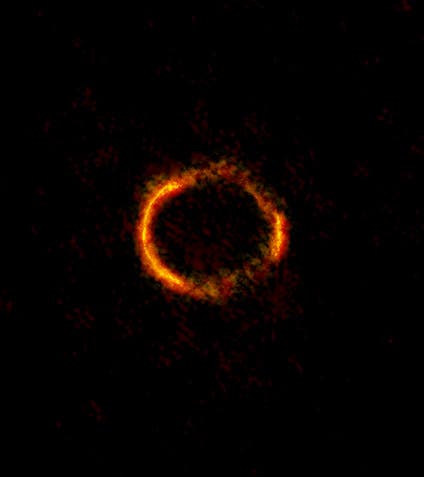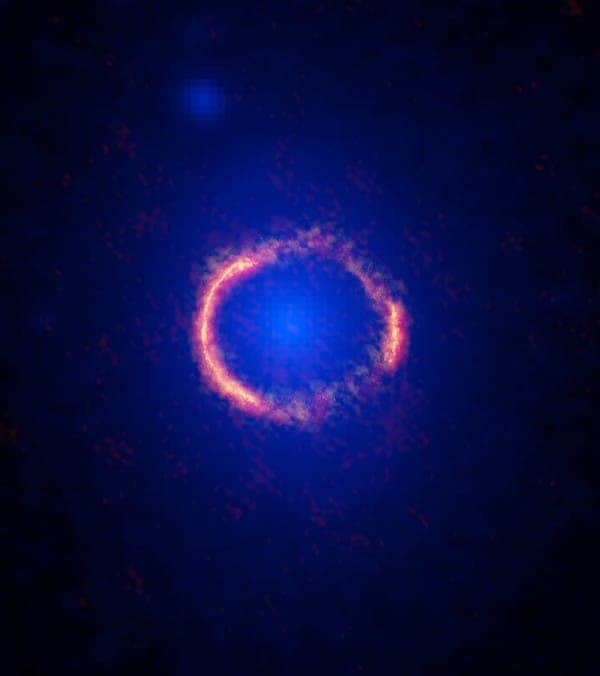According to Einstein’s theory of relativity, if one galaxy is located directly behind another, then the front one would bend the light of the more distant one, in such a way that you’d only see the behind one as a ring. Less than 100 years ago, many researchers thought we’d never see one, but astronomers have managed to take several pictures that confirm it – as in the example you see below.

Basically, everything has gravity, and galaxies have a lot of gravity – so much that they can actually bend light. Without this effect, if two galaxies were aligned perfectly (one behind another), you wouldn’t see the behind one. But because light can be bent by gravity, you can just about see an outer ring from it – the problem is that they really have to be aligned perfectly.
Initially, researchers though we’ never be able to see one of them – the odds of finding two galaxies aligned in such a way is extremely slim, and if we did find it, having the necessary instruments to study it would be extremely difficult. Well, in recent years we’ve found space to be much vaster than we’d previously thought, and telescopes have developed at an amazing pace, so much that we’ve seen not one, but hundreds of Einstein’s rings. Still, this sighting is even more spectacular.
“Gravitational lensing is used in astronomy to study the very distant, very early Universe because it gives even our best telescopes an impressive boost in power,” said ALMA Deputy Program Scientist Catherine Vlahakis. “With the astounding level of detail in these new ALMA images, astronomers will now be able to reassemble the information contained in the distorted image we see as a ring and produce a reconstruction of the true image of the distant galaxy.”
The galaxy known as SDP.81 is located so neatly behind another, unnamed galaxy, that you can see an almost perfect ring. The light from SDP.81 is being lensed, or bent – it’s the familiar concept of gravitational lensing you may already know about … but done perfectly, in this case, so that we see a ring.

Interestingly enough, even though most Einstein’s rings were discovered by the Hubble telescope, this one wasn’t – it was discovered in October 2014 as part of ALMA’s Long Baseline Campaign, a program to test and verify the telescope’s highest resolving power, achieved when ALMA’s antennas are at their greatest separation. The National Radio Astronomy Observatory, which operates the ALMA telescope, said in a statement:
“Though this intriguing interplay of gravity and light in SDP.81 has been studied previously by other observatories, including radio observations with the Submillimeter Array and the Plateau de Bure Interferometer, and visible light observations with the Hubble Space Telescope, none has captured the remarkable details of the ring structure revealed by ALMA.”






